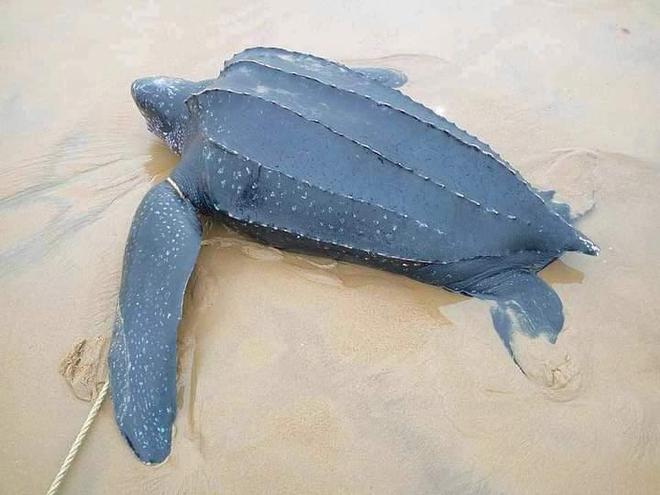In a rare occurrence, a leatherback sea turtle – the world’s largest sea turtle – washed ashore and was successfully released into the sea at Thanthadi Beach, about 30 kilometres from Visakhapatnam. According to marine biologists and local fishermen, the endangered sea turtle was seen in Visakhapatnam coast after a gap of seven years.
In the early hours of June 25, a group of fishermen at Thanthadhi Beach were surprised to find a huge turtle entangled in a ghost net. “This was a species we had never seen before in this region,” says K Masena, a fisherman, who works closely with the AP Department of Forest for marine life conservation. He, along with a few others, swung into action. They removed it from the net and released the turtle back into the sea.
The unusual sighting of the Leatherback turtle, said to have been in existence since the age of the dinosaurs, grabbed widespread attention after Srikanth Mannepuri, a photographer, shared it in social media.
Masena and the group of fishermen had earlier been involved in the rescue mission of the endangered whale shark. Over the past four to five years, he has kept a vigil on the coast, safeguarding Olive Ridley nesting sites and rescuing marine species such as porpoises that at times are washed ashore.

“The leatherback turtle is a stray record. It is unusual to spot the species in this coast. The leatherbacks are normally seen in the Andaman and Nicobar Islands where they come in groups. However, there are no mass nesting sites here as in the case of Olive Ridleys,” says retd. Prof. M Rama Murthy and founder of Dolphin Nature Conservation Society.
The leatherback is the largest sea turtle in the world, weighing up to 700 kilograms and measuring up to six-and-a-half feet as adults. The species is currently listed as threatened in the Red List of International Union for Conservation of Nature (IUCN). According to US-based National Oceanic Atmospheric Administration, its global population is said to have declined 40% over the past three generations.
Loss of nesting sites is one of the key threats to the turtles’ survival, the IUCN states. The turtles also face threat from fishing activities, other human-induced issues like egg collection for consumption, and ingestion of plastic waste.







